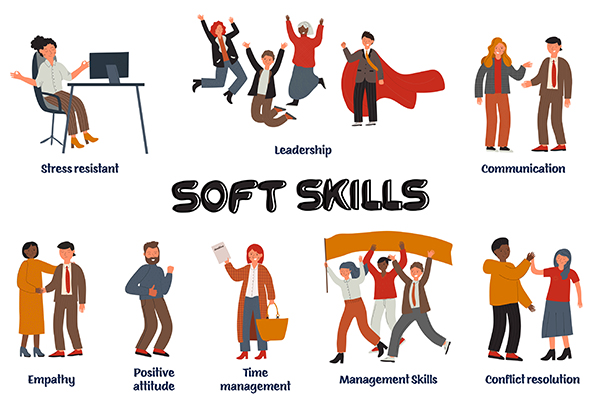Today, the world is changing at a faster pace than ever before. Everything from our work to our social lives, and from our leisure time to our family time, has been changed and disrupted by the relentless acceleration of technological progress.
One aspect of life which has seen more than its fair share of disruption in the last few years is that of education. Cloud-based technologies, the internet, and artificial intelligence are a few examples of a vast array of game-changers that have impacted our education.
We can only expect this disruption to keep moving forward – and it's up to us to be prepared for it. Here, we’ve gathered some of the key trends which we expect to shape the educational space in 2020.

The rise of online classrooms
Online classrooms have long been seen as the holy grail of the educational technology (“edutech”) industry. The video calling and interactive teaching software required to make them function properly has only reached widespread adoption in the last few years. It takes a lot of bandwidth to run a group call with twenty people on it, and nobody wants to be spending an entire lesson asking their teacher to repeat themselves because their connection is cutting out!

One of the first educational institutions to foray into the online education space was the Stanford Online High School, established in 2006. With an average class size of eleven students, the school offers both part- and full-time enrolments for students who demonstrate strong academic capability and extracurricular commitment. More recently, the Crimson Global Academy, launched by Crimson Education in 2019, became the first online high school launched out of New Zealand, offering online GCSE and A Level courses to gifted students.
While online classrooms have the potential to change the education game, they also need to be managed with the greatest of care, so that students get all of the benefits and miss out on the risks. It goes without saying that an online high school is not for everyone; many students will value the social life of a physical high school ahead of the flexibility provided by an online high school. One of the key groups of students who benefit from such an education, though, is that of rising elite sports stars or performers. Such people dedicate hours every day to their training, and the flexibility of an online high school allows them to fit in their education so they don’t fall behind their peers.
With the COVID-19 outbreak dominating global headlines in early 2020, there has never been a more critical time for online classrooms to break into the world’s education system.
Disruption of traditional defined career paths
As late as the turn of the last century, it was the norm for people to settle upon a career path before beginning their University degree. Once they had chosen this, lateral movement between fields was fairly rare, and would often require a significant period of retraining. This meant people would become experts in one particular area, and would rarely explore other areas in a professional context.
Over the last two decades, the workforce has been disrupted by the growing prevalence of “job-hopping”. The expectation was no longer that workers would stay in their jobs for ten years, or more, and it became much more common for talented workers to move around jobs within their field, staying perhaps only two or three years at each place.
In 2020, though, the very idea of a “field” of expertise is up for discussion. It’s now commonplace to see a marketer who has never studied marketing at University, or a data analyst without a degree in data or computer science, for example. Top global consulting firms such as Boston Consulting Group, Bain, and Deloitte now look to recruit talented graduates from any University programme.
For some, this has thrown the entire function of the education system into question. After all, why are students spending their time studying to become an expert in a particular field if they will not necessarily work in this field? In reality, though, the purpose of education is much broader than this. Students at high school and university are learning how to learn, how to work with people, and how to take ownership of projects, as well as content knowledge within their primary field. Now, more than ever, the education system is evolving to reflect this fact.
What does this mean, then? Above all, it means students must focus on developing key skills, regardless of their choice of subjects at high school and field of study at university. Soft skills such as communication, empathy, and leadership are more important than content knowledge in virtually every field.

And of course, it’s important not to estimate the impact that computer science skills will have over the next few years…
The education vs. technology battle intensifies
What sets us apart from artificial intelligence? Are we really smarter than robots? Will machines take over the world? Nobody really knows the answer to these questions, and it’s very difficult to predict what the world will look like even twenty years in the future.
One thing is a constant, though: we are caught in the midst of an ongoing race between education and technology. From a basic economic perspective, any job will be filled by the human, or machine, which provides an employer with the greatest benefit in relation to the cost of employment. Thus, as the capabilities of technology increase, the function and capability of the education system – and the skills it provides to those who go through it – must also match this increase, if we as humans are to stay employed.

What does this look like in practice? Well, to a certain extent, it means students will have to work harder and learn more material. But we can’t keep expecting students to learn more and more, forever. The bulk of the impact will be upon the type of skills we learn.
Specifically speaking, computer science and programming skills will become a more established part of the school curriculum. The New Zealand Ministry of Education have implemented a new digital technology curriculum for 2020, which sees students learn key computing skills alongside the traditional core subjects such as Maths and Science.
The result of changes such as this is that students will be better prepared to navigate the workforce of the future. Ultimately, we will need to learn alongside robots and artificial intelligence; the influential jobs of tomorrow will belong to those who know how to manage this relationship effectively. Implementing a learning path towards this into today’s education system is a necessary step in preparing our students for the future.
Student-led learning
Plenty of educational research has proven that students learn better when they’re driving their own learning, rather than following a teacher’s agenda. And, intuitively, this makes a lot of sense: everyone prefers doing things they enjoy, and will work a lot harder at them.
The problem, though, is how to make this work. The typical classroom environment involves one teacher and many students. While some students might jump at the chance for self-directed learning, ensuring everyone in the class stays on task (and nobody causes any distraction) is another matter entirely.
In the modern classroom, however, artificial intelligence and e-learning solutions provide an answer to this problem. Teachers now find it easier to tap into a vast network of learning materials, and provide their students with the tools they need to learn, rather than prescribe the exact content. Even if a particular primary school teacher isn’t an expert on coding, for example, they are able to point an enthusiastic student in the direction of e-learning courses explaining the basics of computer science and robotics. In this way, the teacher becomes a facilitator and mentor, rather than simply repeating content to a group of students who aren’t primed to take it in.

How do I prepare myself?
Technological trends can seem uncertain, and even scary. It’s hard to know what to spend your time on, and what skills to develop. At EduExperts, we pride ourselves on taking a future-facing approach to education. We prepare students for the workforce of tomorrow, rather than reacting to today’s trends.
Want to know more and get involved? Get in touch with your local centre today!











